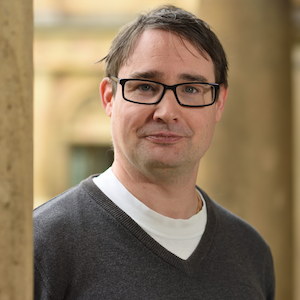Computational models of how users perceive, think, and move in virtual or physical environments hold great promise for the future of HCI. Cognitive models help us understand how attention, beliefs, and goals shape user decisions, while biomechanical simulations capture the physical aspects of interaction—such as effort, fatigue, and posture.
The next frontier is connecting these two perspectives. By integrating cognitive and biomechanical modeling, we can create embodied user simulations that better predict user strategies, movements, and intent. This opens up new possibilities for benchmarking interaction techniques, optimizing ergonomics, and designing adaptive, user-aware systems.
This UIST workshop brings together researchers across disciplines to explore how computational modeling can enhance UI/UX design, automate system evaluation, and support personalization. Join us as we identify challenges, share ideas, and shape the future of interactive behavior simulation.
Goals and Activities
The goal of Mind & Motion is to explore how cognitive and biomechanical models can advance user interface design and usability. By bringing together researchers and practitioners from across disciplines, the workshop aims to foster collaboration, share insights, and identify real-world applications where predictive and embodied user models can make a tangible impact in HCI.
We welcome anyone working on simulations or computational models of user behavior—whether focused on cognition, motor control, or their intersection. Participants are encouraged to share hands-on examples of their recent work, including prototypes, tools, or lessons from failed attempts. Our aim is to build a shared understanding of current challenges and opportunities in modeling interactive user behavior.
The workshop includes two keynotes on cutting-edge research in biomechanical simulations and cognitive modelling. After the keynotes, which intentionally follow each other to provide input from different areas and perspectives, we foster discussions and exchange in small groups.
Schedule and Location
The workshop will take place on September 28, 2025, 9:00–17:00 in room XX. See full UIST workshop programme here.
| Activity | Time | Description |
|---|---|---|
| Welcoming and Introduction | 9:00–10:00 | Welcoming and introduction of participants through lightning talks |
| Keynote 1 | 10:00–10:45 | Keynote on Biomechanical Modeling |
| Keynote 2 | 10:45-11:30 | Keynote on Cognitive Modeling |
| Brainstorming: Use Cases and Applications | 11:30-12:30 | With both keynotes in mind, this session provides an opportunity to brainstorm Use Cases and Applications in smaller groups. |
| Lunch | 12:30–13:30 | Enjoy some great local food. |
| Spotlights and Demos | 13:30–14:30 | In this interactive demo carousel, selected participants will showcase hands-on examples of cognitive and biomechanical modeling to spark discussion on practical challenges and lessons learned. |
| Group Discussion: Challenges and Limitations | 14:30–15:30 | Discussion of grand challenges and limitations simulations will face in the previously identified applications. |
| Coffee Break | 15:30–16:00 | Networking, Relaxation |
| Closing Session | 16:00–17:00 | This closing session will wrap up key insights, reflect on participants' learnings, summarize participants' shared interests, and discuss next steps for integrating biomechanical and cognitive simulations in HCI. |
| Dinner | ??? | Informal dinner for all participants who still have some energy left |
Organizers
Arthur Fleig

Arthur Fleig is a junior research group leader at ScaDS.AI Leipzig, Leipzig University. His research interests lie on the interface between Computer Science and Mathematics. He focuses on modelling, simulation, and optimal control of real-world-relevant dynamical systems within Human-Computer Interaction.
Florian Fischer

Florian Fischer is a Postdoc in the Intelligent Interactive Systems group at Cambridge University, with a background in mathematics. His research areas include optimal control methods and deep reinforcement learning (RL) for human-computer interaction, biomechanical user modelling, mid-air interaction techniques, and social VR.
Markus Klar

Markus Klar is a Postdoc in the Inference, Dynamics and Interaction group at the University of Glasgow. His research focuses on the simulation of human interactions with computers using biomechanical models, model-predictive control, and RL. As part of the DIFAI project, he is working on active inference-based simulations and applications.
Patrick Ebel

Patrick Ebel is leading the junior research group CIAO at ScaDS.AI, Leipzig University. His research focuses on data-driven and RL-based user models for simulating human-computer interaction in dynamic environments.
Miroslav Bachinski

Miroslav Bachinski is an associate professor at the University of Bergen. His research focuses on the development and application of data-driven methods to improve post-desktop user interfaces within the large spaces of alternative designs (e.g., virtual reality, levitation).
Per Ola Kristensson

Per Ola Kristensson is a Professor of Interactive Systems Engineering in the Department of Engineering at the University of Cambridge and a Fellow of Trinity College, Cambridge. He is a co-founder and co-director of the Centre for Human-Inspired Artificial Intelligence at the University of Cambridge.
Roderick Murray-Smith

Roderick Murray-Smith is professor in the School of Computing Science at the University of Glasgow, where he is a member of the Inference, Dynamics and Interaction group and works in the areas of human-computer interaction, machine learning, and control, leading the ERC project DIFAI on active inference in HCI.
Antti Oulasvirta

Antti Oulasvirta leads the User Interfaces research group at Aalto University and the Interactive AI research program at the Finnish Center for AI.